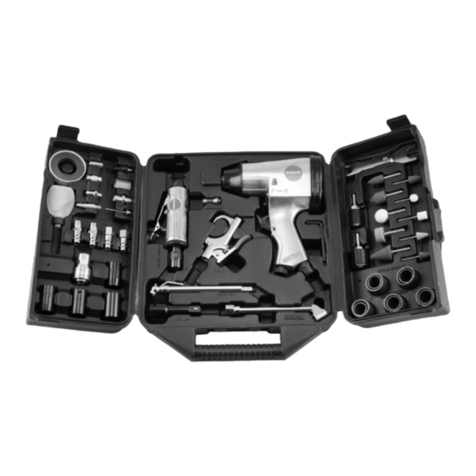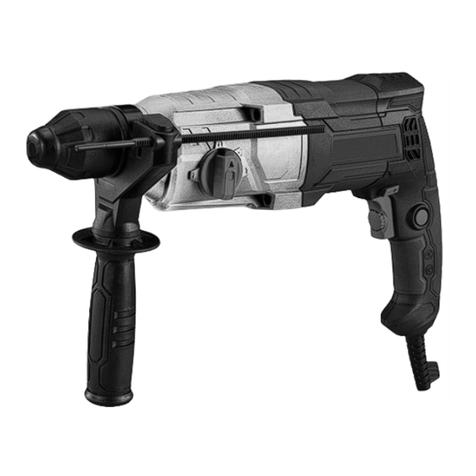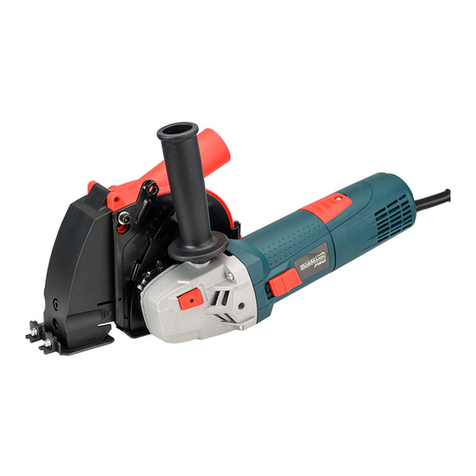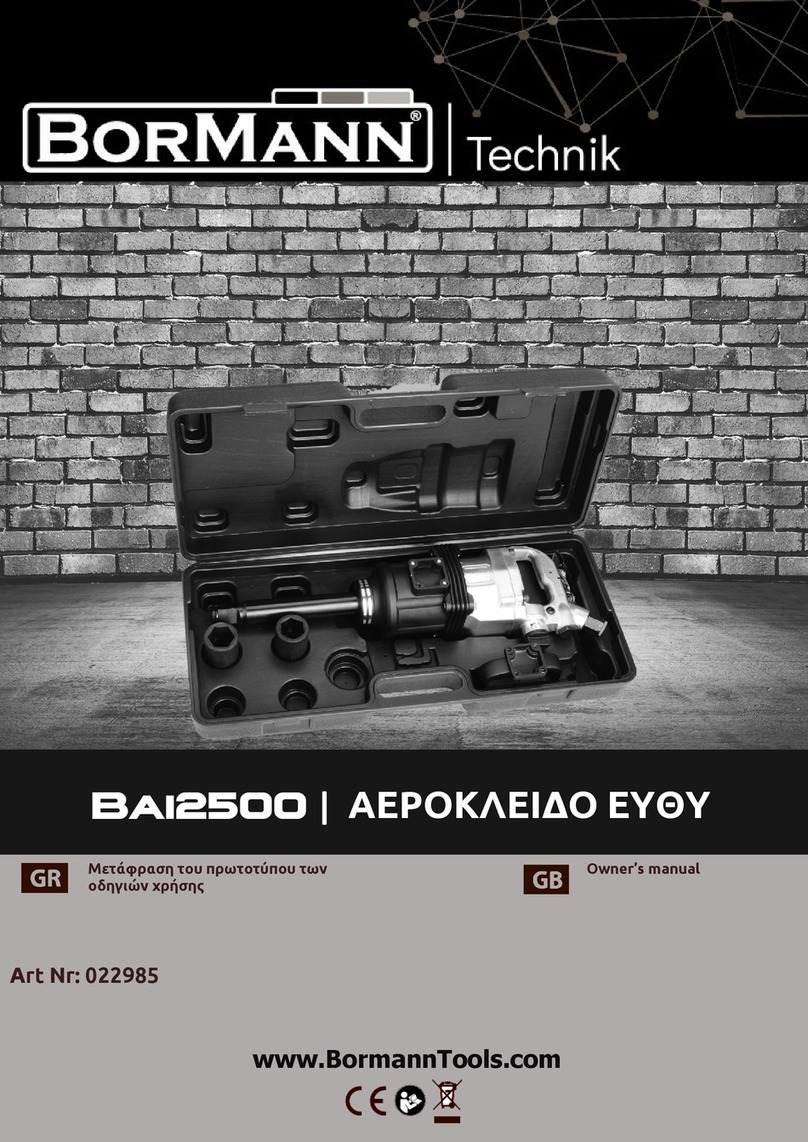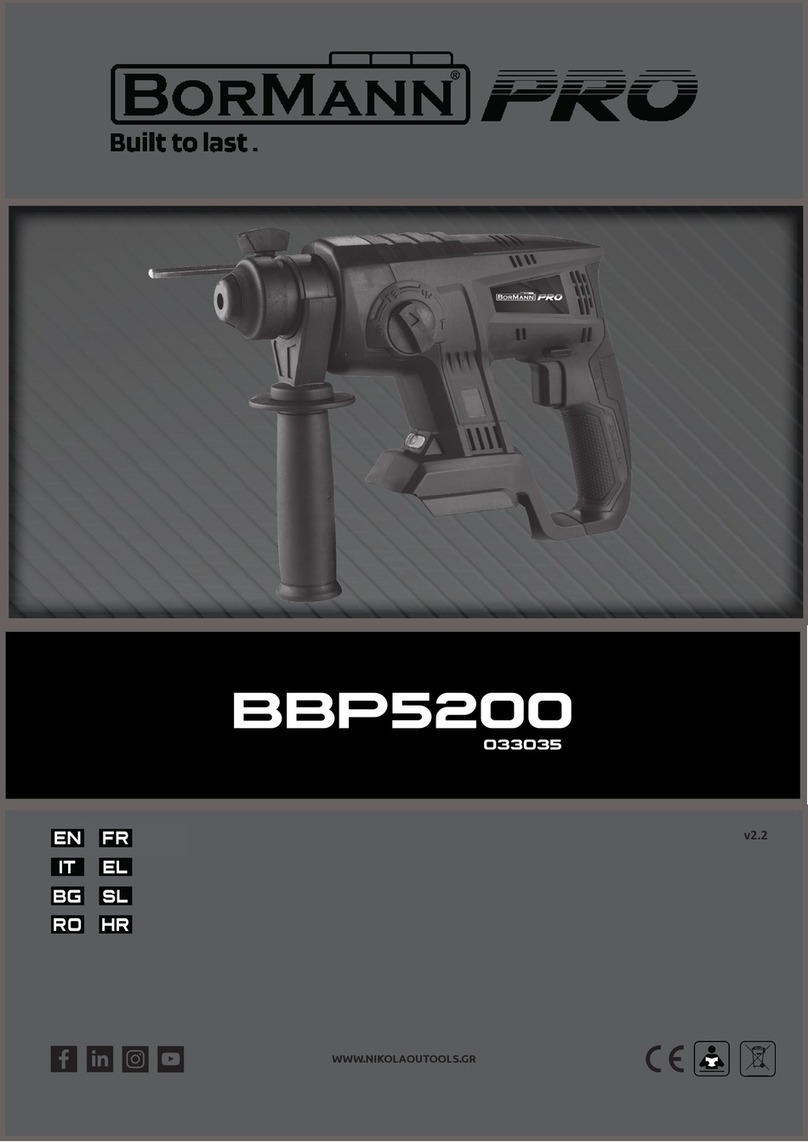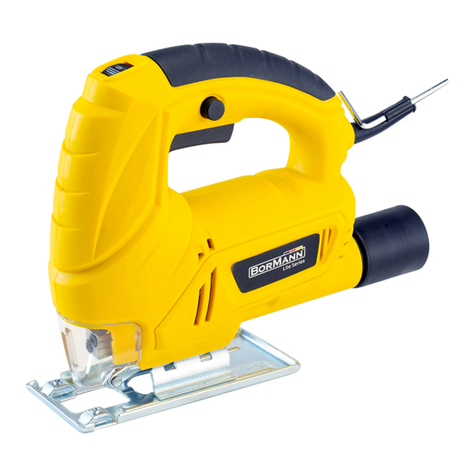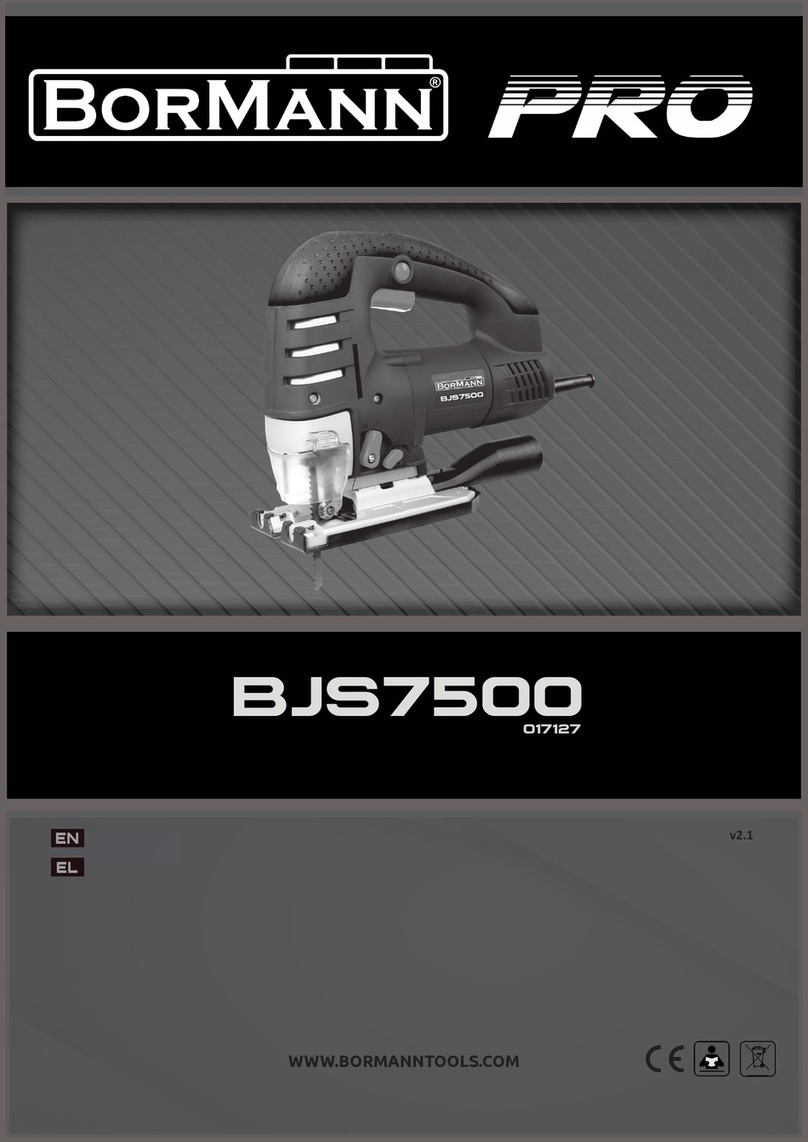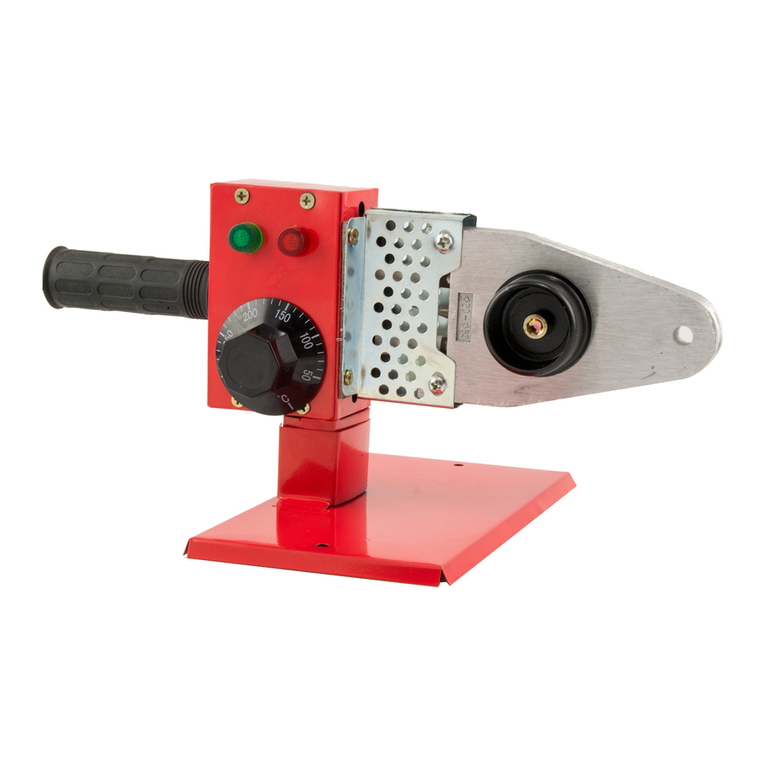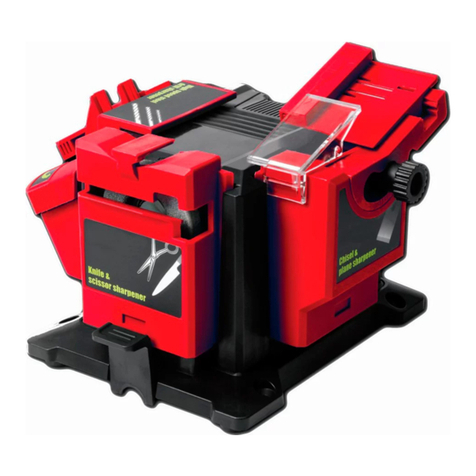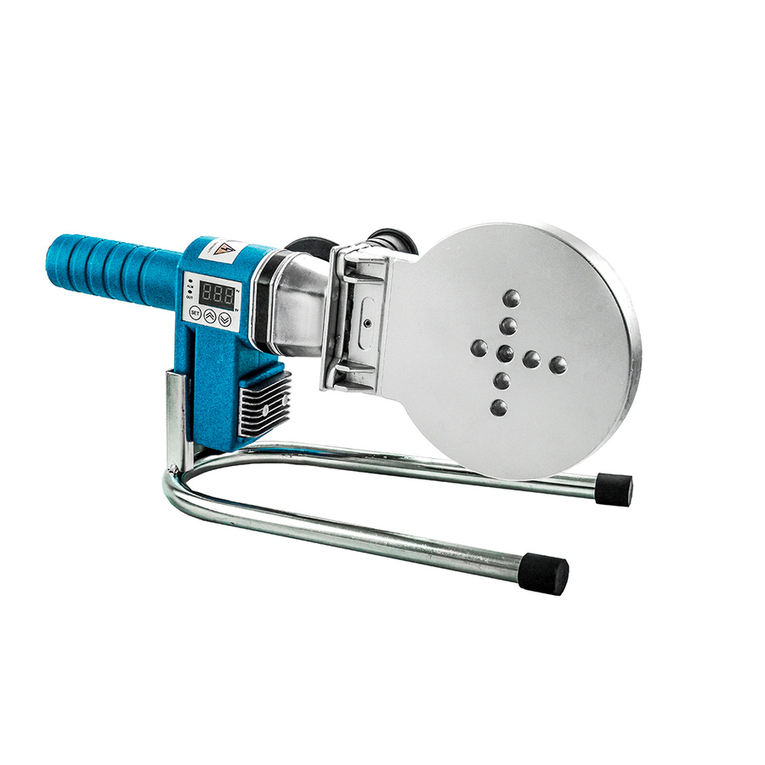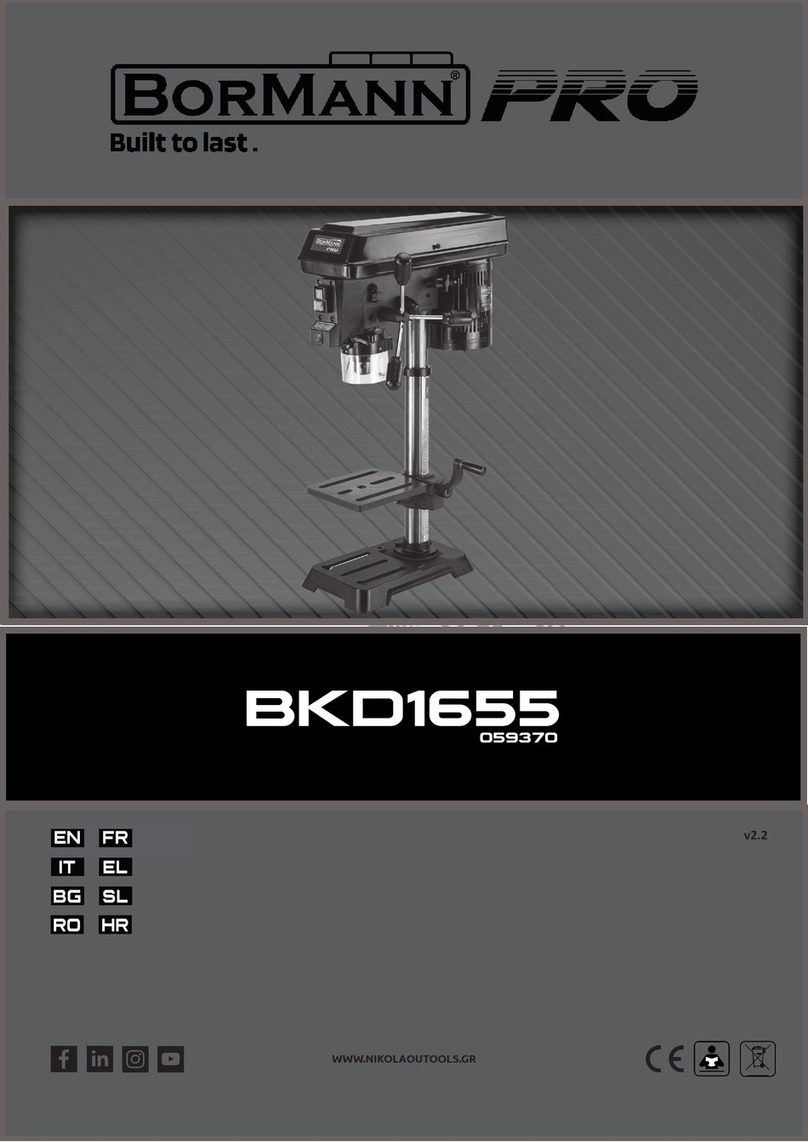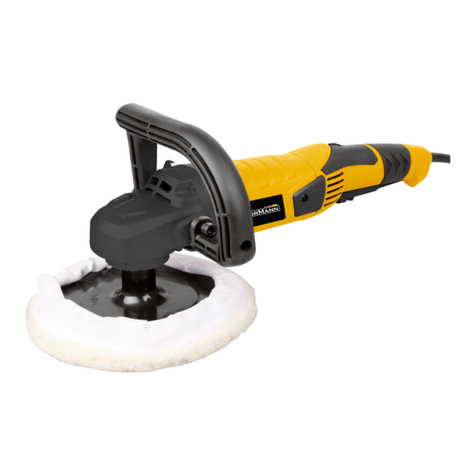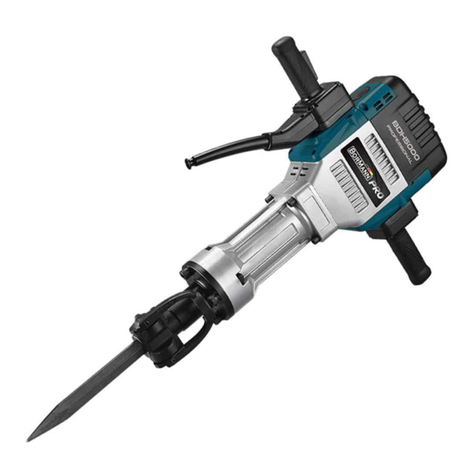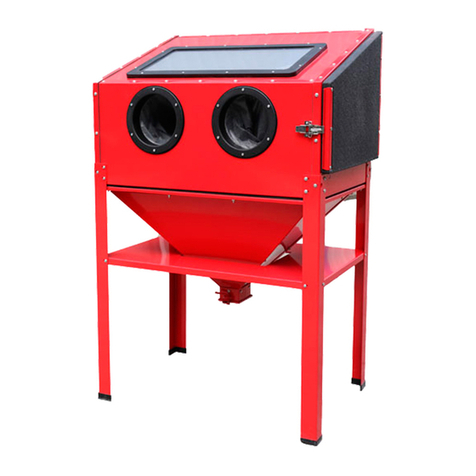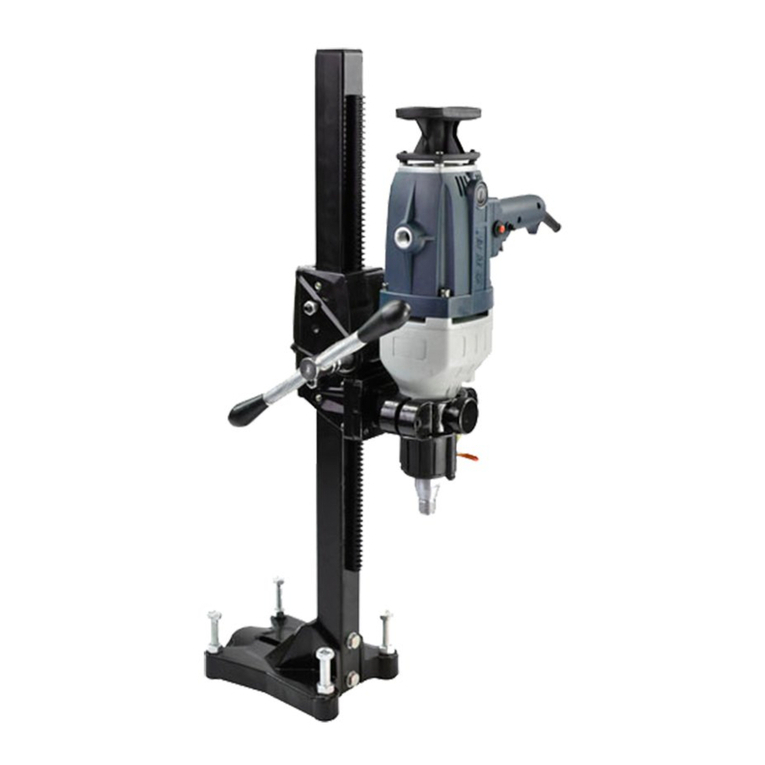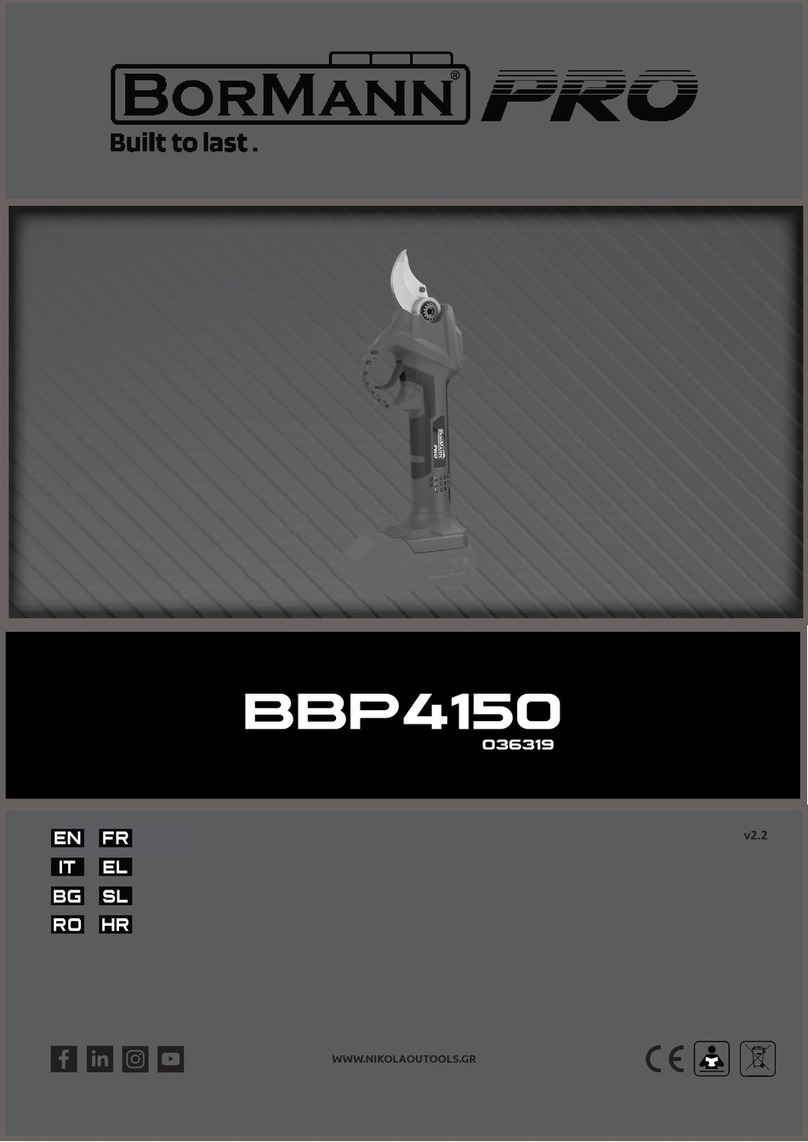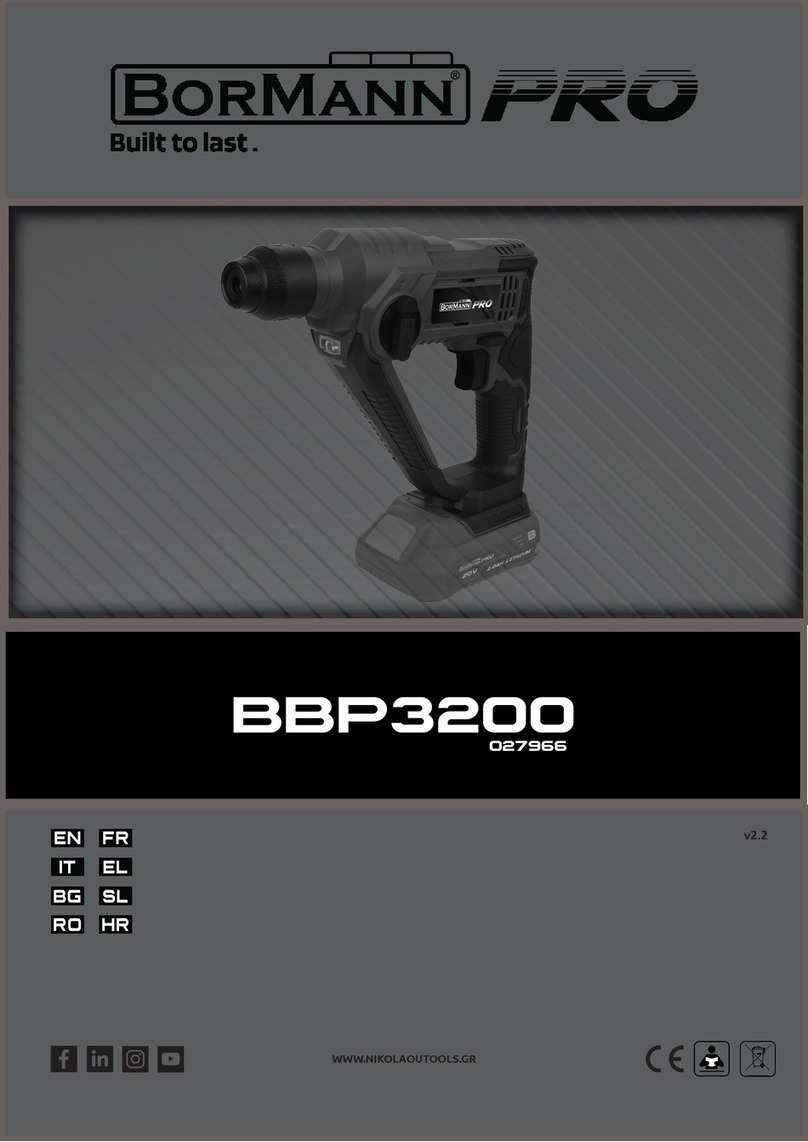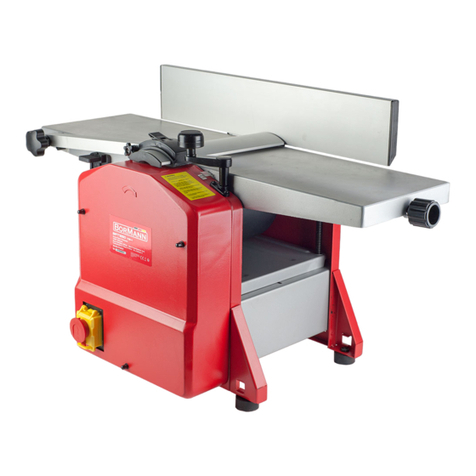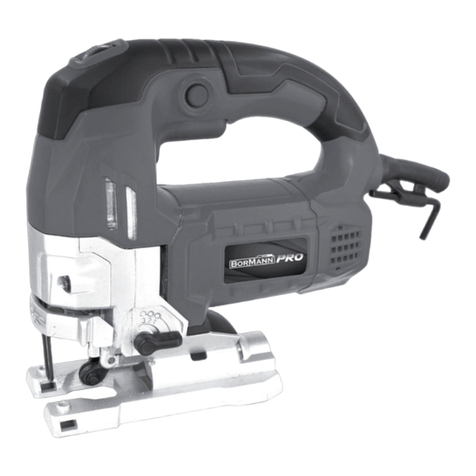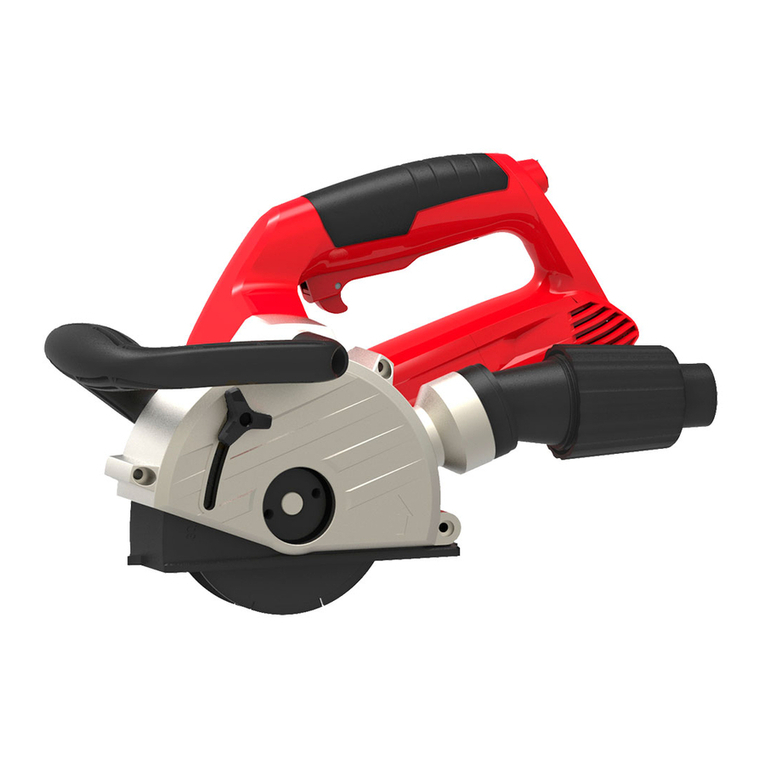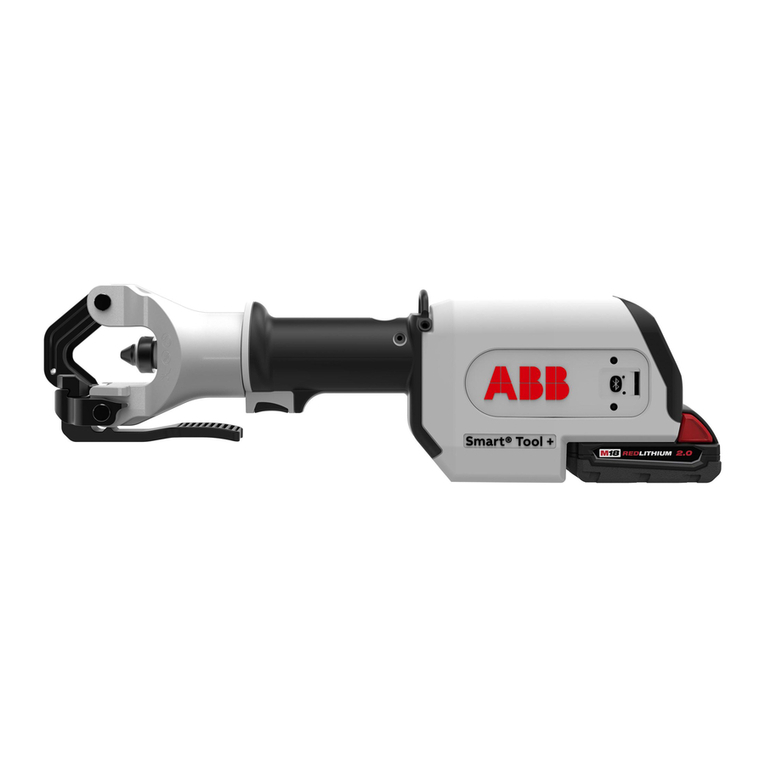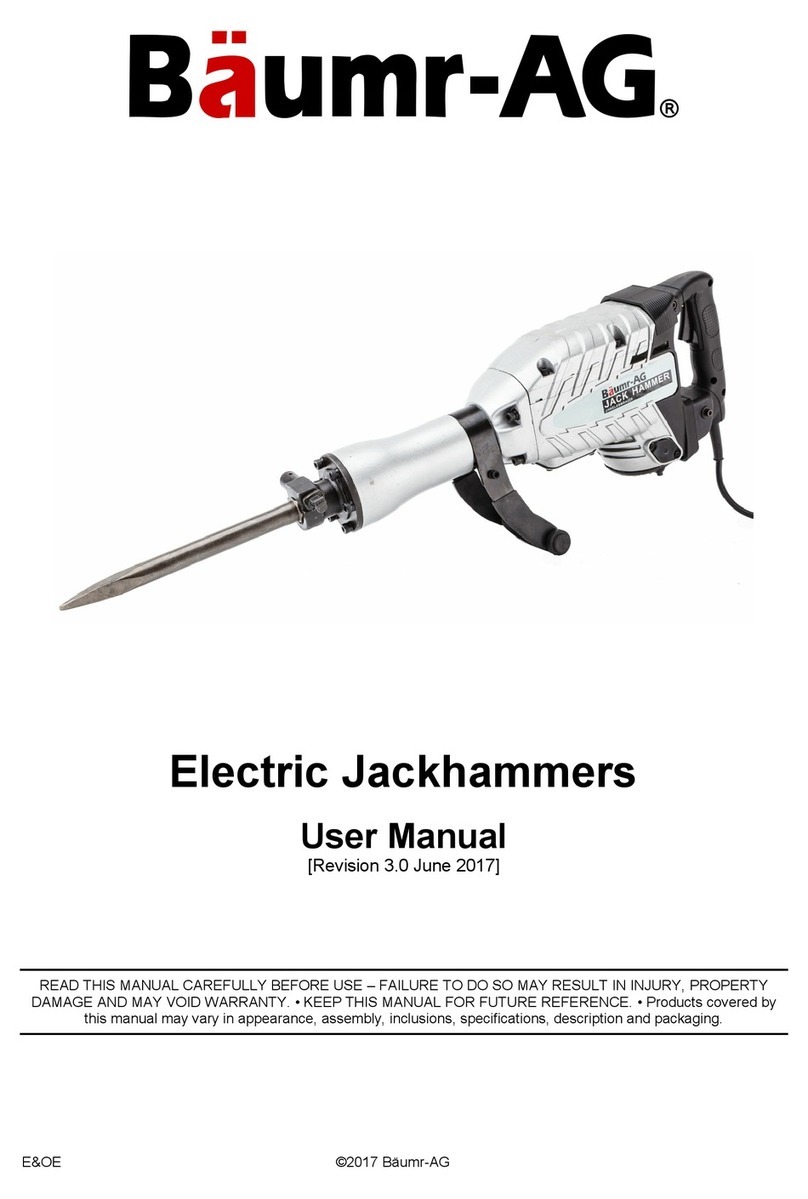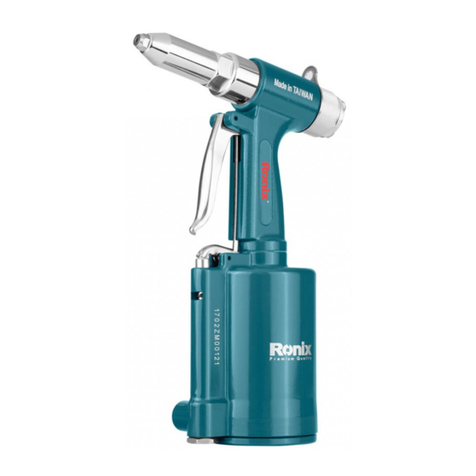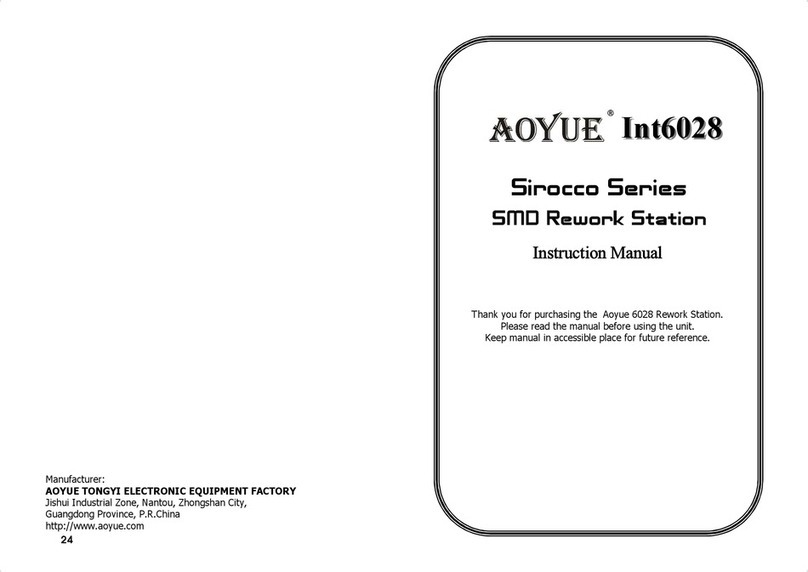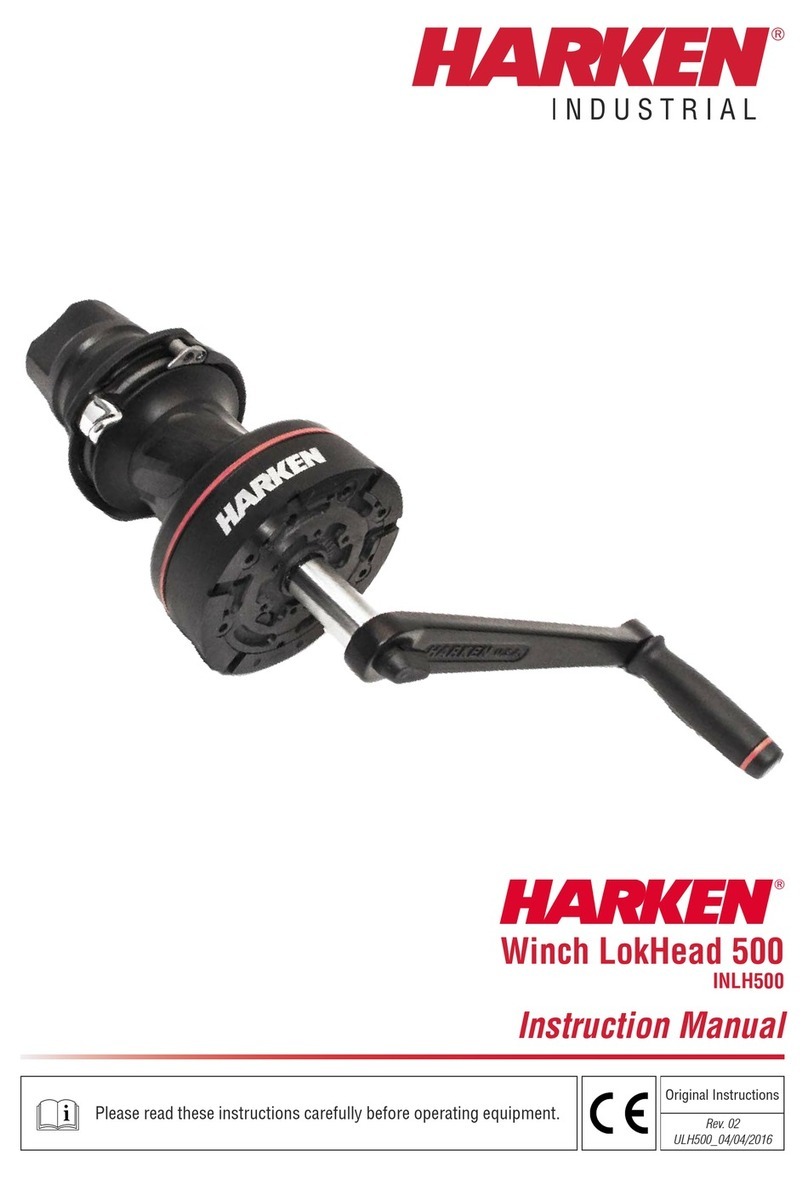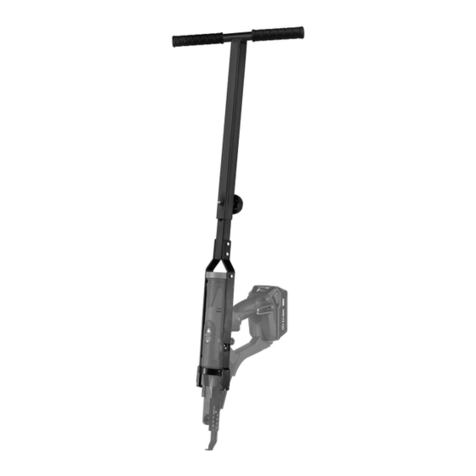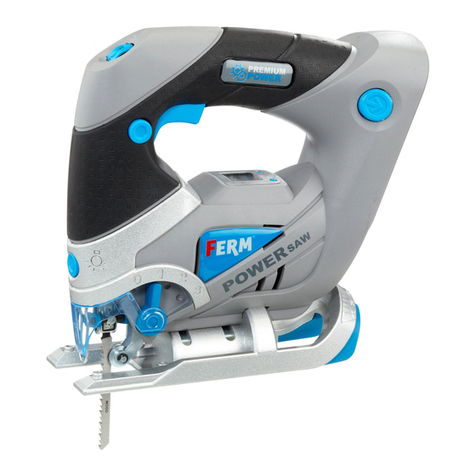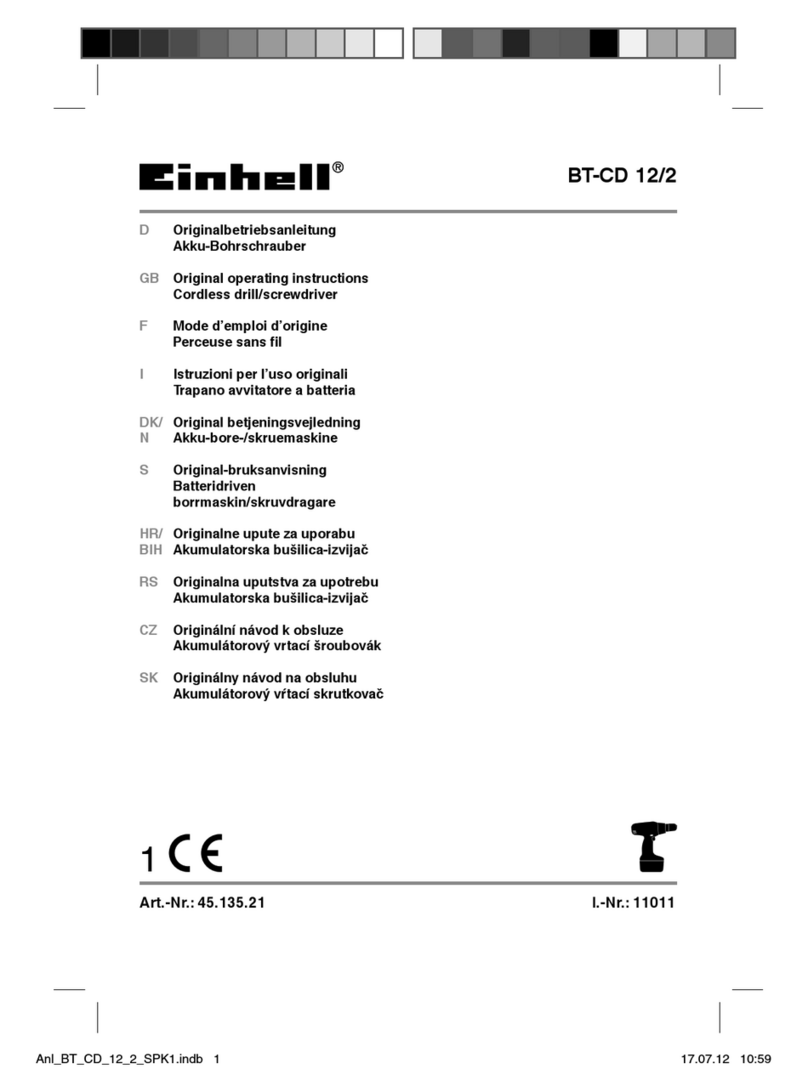
10
www.BormannTools.com
GB
Safety
IMPORTANT SAFETY INSTRUCTIONS
INSTRUCTIONS PERTAINING TO A RISK OF FIRE, ELECTRIC SHOCK, OR INJURY TO PERSONS
WARNING – When using tools, basic precautions should always be followed, including the following:
General
To reduce the risks of electric shock, fire, and injury to persons, read all the instructions before using the tool.
Work Area
1. Keep the work area clean and well lighted. Cluttered benches and dark areas increase the risks of electric shock, fire, and
injury to persons.
2. Do not operate the tool in explosive atmospheres, such as in the presence of flammable liquids, gases, or dust. The tool
is able to create sparks resulting in the ignition of the dust or fumes.
3. Keep bystanders, children, and visitors away while operating the tool. Distractions are able to result in the loss of control
of the tool.
Personal Safety
1. Stay alert. Watch what you are doing and use common sense when operating the tool. Do not use the tool while tired or
under the influence of drugs, alcohol, or medication. A moment of inattention while operating the tool increases the risk of
injury to persons.
2. Dress properly. Do not wear loose clothing or jewelry. Contain long hair. Keep hair, clothing, and gloves away from
moving parts. Loose clothes, jewelry, or long hair increases the risk of injury to persons as a result of being caught in moving
parts.
3. Avoid unintentional starting. Be sure the trigger is released before connecting to the air supply. Do not connect the tool
to the air supply with the switch on.
4. Do not overreach. Keep proper footing and balance at all times. Proper footing and balance enables better control of the
tool in unexpected situations.
5. Use safety equipment. A dust mask, non-skid safety shoes and a hard hat must be used for the applicable conditions.
6. Always wear eye protection.
7. Always wear hearing protection when using the tool. Prolonged exposure to high intensity noise is able to cause hearing
loss.
Tool Use and care
1. Use clamps or another practical way to secure and support the workpiece to a stable platform. Holding the work by hand
or against the body is unstable and is able to lead to loss of control.
2. Do not force the tool. Use the correct tool for the application. The correct tool will do the job better and safer at the rate
for which the tool is designed.
3. Do not use the tool if the switch does not turn the tool on or off. Any tool that cannot be controlled with the switch is
dangerous and must be repaired.
4. Disconnect the tool from the air source before making any adjustments, changing accessories, or storing the tool. Such
preventive safety measures reduce the risk of starting the tool unintentionally. Turn off and detach the air supply, safely
discharge any residual air pressure, and release the throttle and/or turn the switch to its off position before leaving the work
area.
5. Store the tool when it is idle out of reach of children and other untrained persons. A tool is dangerous in the hands of
untrained users.
6. Maintain the tool with care.
7. Check for misalignment or binding of moving parts, breakage of parts, and any other condition that affects the tool's
operation.If damaged, have the tool serviced before using. Many accidents are caused by poorly maintained tools. There is a
risk of bursting if the tool is damaged.
8. Use only accessories that are identified by the manufacturer for the specific tool model. Use of an accessory not
intended for use with the specific tool model, increases the risk of injury to persons.
Service
1. Tool service must be performed only by qualified repair personnel.
2. When servicing a tool, use only identical replacement parts. Use only authorized parts.
Air Source
1. Never connect to an air source that is capable of exceeding 200 psi. Over pressurizing the tool may cause bursting,
abnormal operation, breakage of the tool or serious injury to persons. Use only clean, dry, regulated compressed air at the
